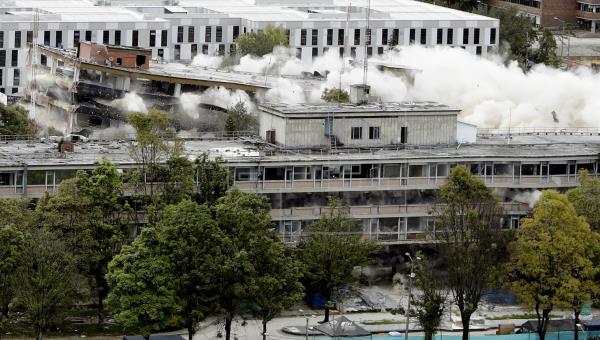RIO DE JANEIRO, BRAZIL – Colombian authorities imploded this Sunday, July 4, in Bogotá, the building that has served as the headquarters of the Ministry of Defense for 59 years, due to a structural failure. This marks the beginning of the “Fortaleza Project”, which plans to build a new administrative complex for the Armed Forces.
“The implosion of the old building of the Ministry of Defense means the beginning of the ‘Fortaleza Project’, which will allow strengthening the capacities of our Military and Police Forces”, said the head of the Ministry of Defense Diego Molano.

For the implosion, 433 kilos of “indugel” were used, a Colombian explosive embedded in 1,889 perforations, located in 533 columns of the structure.
The demolished building, located in the National Administrative Center (CAN), had 74,260 square meters and, after the implosion, an estimated volume of debris of 222,780 cubic meters.
The government plans to award the construction of the Fortaleza building on July 15, a tender in which only Colombian construction companies may participate.
It is also part of the government’s “Commitment to the Future of Colombia” initiative, with which the executive plans to generate 2 million jobs through 500 projects, with an investment of over 140 trillion pesos (some US$37.4 billion). The “Fortaleza Project” construction is expected to generate 7,000 jobs per year.
“It is estimated that this project will generate more than 40,000 jobs between direct and indirect until 2026, as well as 5,000 more during the construction of the building where the Defense Sector’s ICT infrastructure will be installed,” Molano added.
The director of Planning of the General Command of the Military Forces, General Yuber Aranguren, explained that “to decide to demolish” the building, “it was necessary to go through several stages and vulnerability and resistance studies that showed several inclinations of the structures, pronounced cracks and considerable and visible damages on the columns”.
“These findings led to a total eviction, to prevent a possible collapse and affect the people who daily entered these facilities”, he added.

